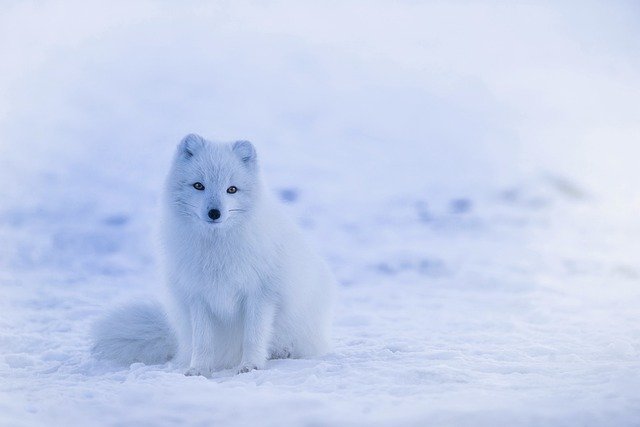Arctic Fox Adaptation

The Arctic fox (Vulpes lagopus), also known as the white fox, polar fox, or snow fox, is a small fox native to the Arctic regions of the Northern Hemisphere. It is well-adapted to living in cold environments and has a thick, white coat that provides camouflage in the snowy terrain.
The Arctic fox has a compact body shape and a short, rounded snout. Its ears are small and rounded, and its legs are short and sturdy. The fox's tail is also short and bushy, which helps to keep it warm in the cold.
The Arctic fox's diet consists mainly of small mammals, such as lemmings, voles, and hares, as well as fish, birds, and insects. In areas where food is scarce, the fox will also eat berries and other plant material.
The Arctic fox is a solitary animal and typically only comes together with others during the breeding season. Female Arctic foxes will give birth to litters of up to 14 pups, which are born blind and deaf. The pups are cared for by both the mother and father and will stay with their parents until they are ready to strike out on their own.
The Arctic fox's thick coat provides excellent insulation, but it also has a system of countercurrent heat exchange in its legs which prevents heat loss. This allows the fox to keep its paws warm while hunting in the cold, snowy terrain.
The Arctic fox is considered a "Least Concern" species by the International Union for Conservation of Nature, but their population is decreasing due to human activity such as hunting and habitat loss.
Overall, the Arctic fox is a fascinating and hardy animal that is perfectly adapted to life in the harsh Arctic environment.
I appreciate your support! Thank you!